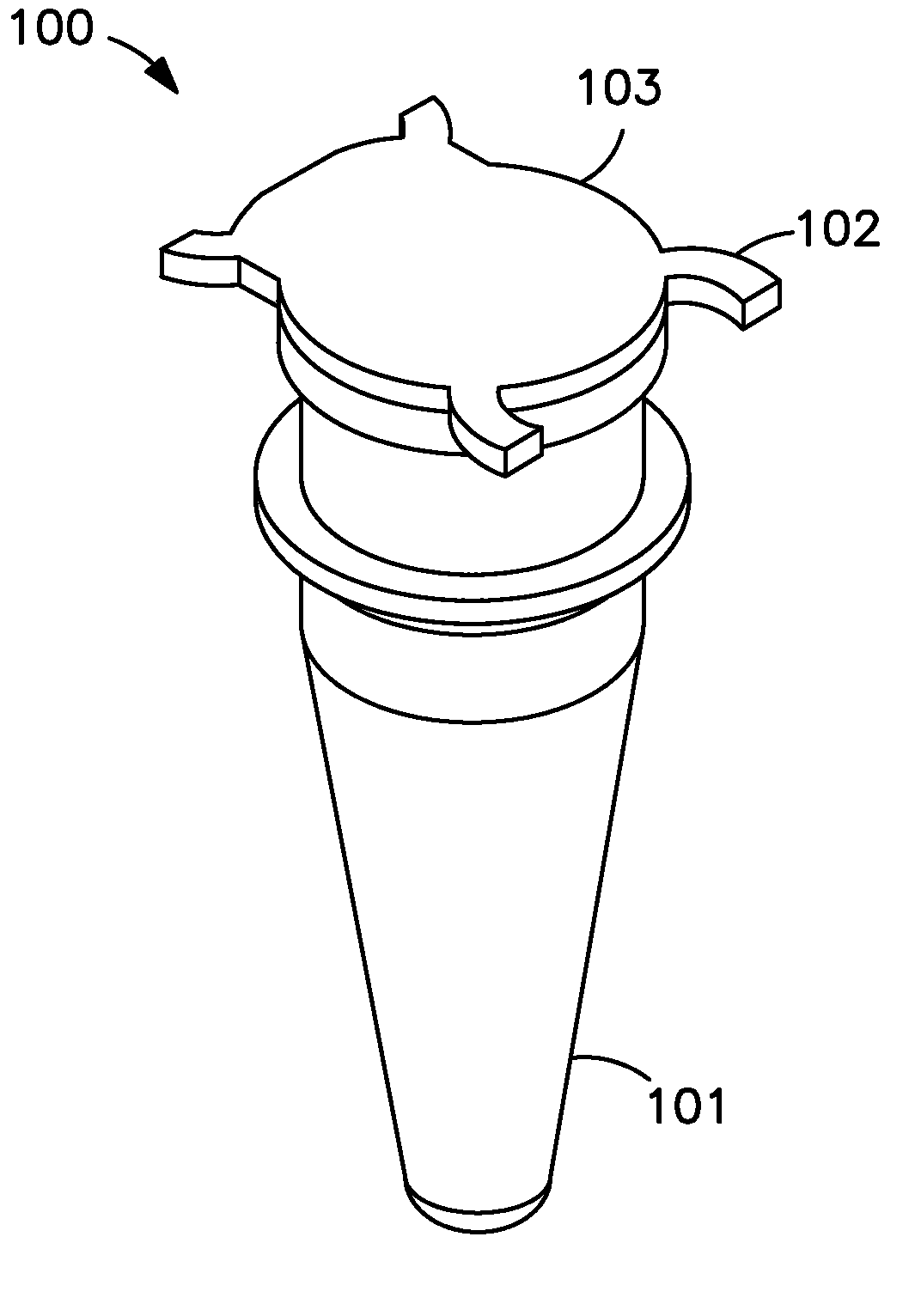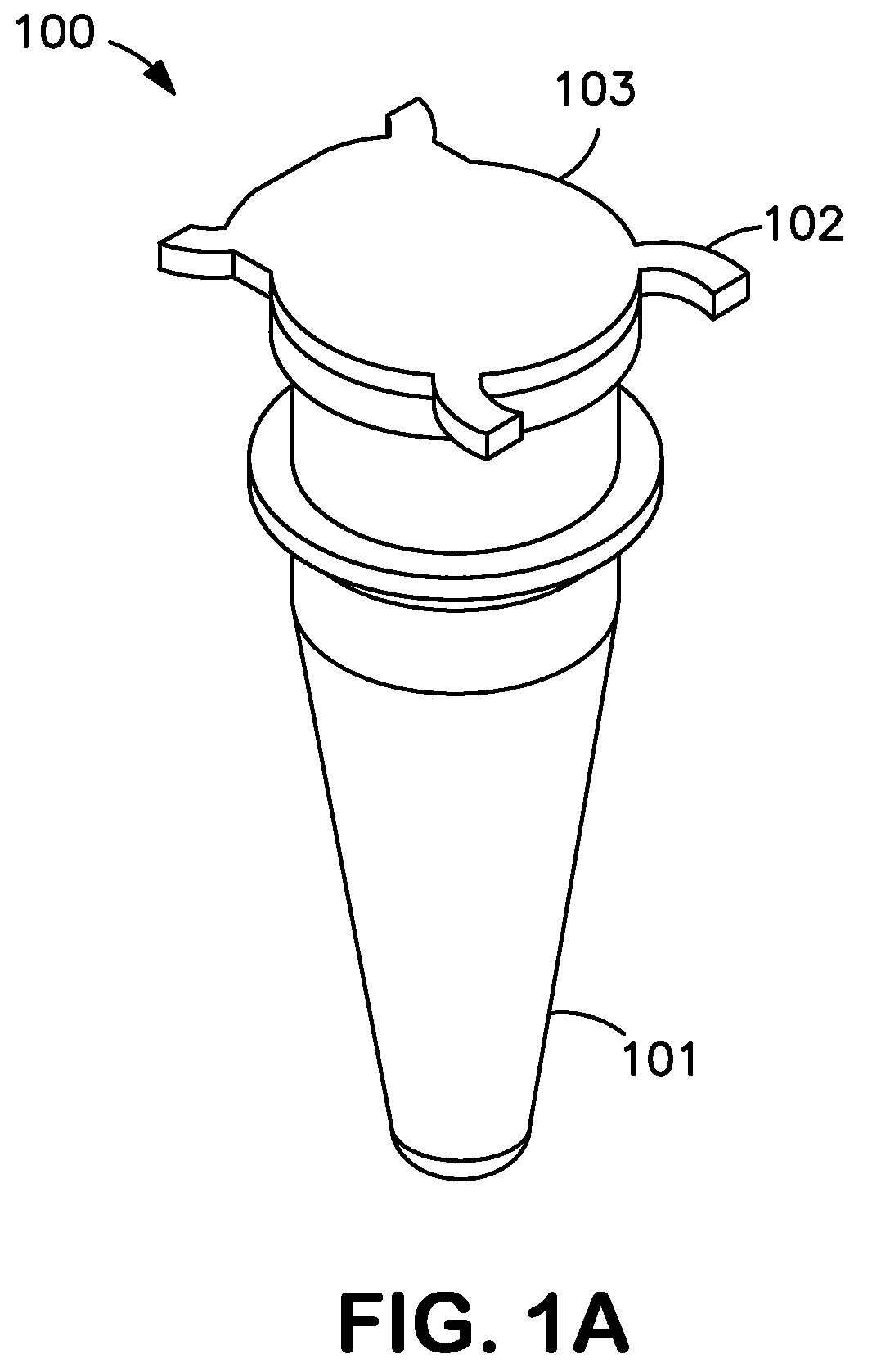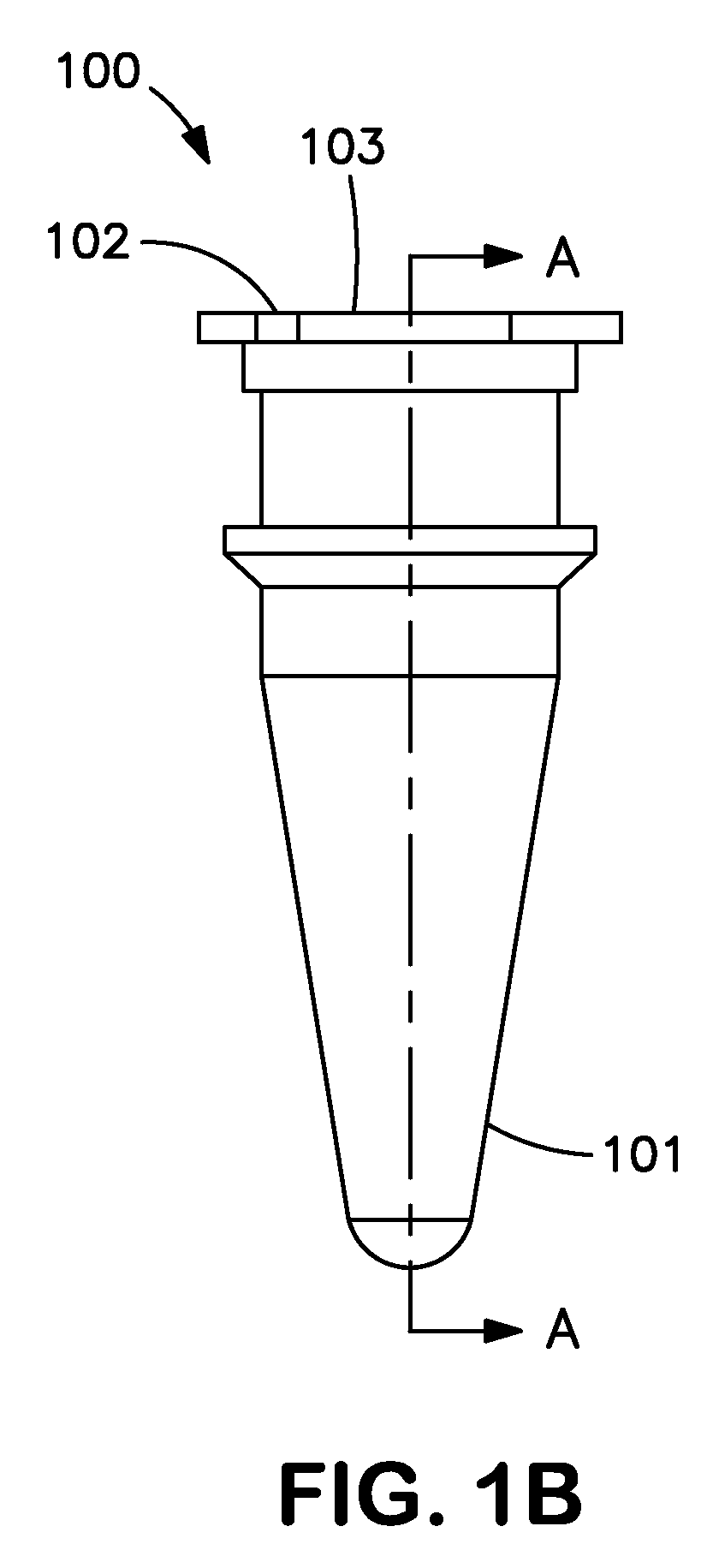Compositions and Reaction Tubes with Improved Thermal Conductivity
a technology of reaction tubes and compositions, applied in the field of chemistry and molecular biology, can solve the problems of inefficient or inefficient heat transfer, inefficient or inefficient use of heat transfer resources, inefficient processing, etc., and achieve the effect of improving the overall reaction time of pcr reactions, reducing overall reaction time processing, and increasing the speed of chemical or biochemical reactions using thermal cycling
- Summary
- Abstract
- Description
- Claims
- Application Information
AI Technical Summary
Benefits of technology
Problems solved by technology
Method used
Image
Examples
Embodiment Construction
[0034]Reference will now be made in detail to various exemplary embodiments of the invention, examples of which may also be illustrated in the accompanying drawings. The following detailed description is provided to give the reader a better understanding of certain features and details of embodiments of the invention, and is not to be understood as a limitation on any aspect or feature of the invention as broadly disclosed herein, depicted in the figures, or claimed. It will be readily apparent to those of skill in the art that various other modifications to the present invention may be made without departing from the scope and spirit of the invention.
[0035]The compositions according to the present invention comprise plastic and at least one compound having a higher thermal conductivity than the plastic. The resultant compositions have increased thermal conductivity relative to the plastic alone and are capable of facilitating rapid heat transfer in numerous heat transfer applicatio...
PUM
| Property | Measurement | Unit |
|---|---|---|
| density | aaaaa | aaaaa |
| density | aaaaa | aaaaa |
| angle | aaaaa | aaaaa |
Abstract
Description
Claims
Application Information
 Login to View More
Login to View More - R&D
- Intellectual Property
- Life Sciences
- Materials
- Tech Scout
- Unparalleled Data Quality
- Higher Quality Content
- 60% Fewer Hallucinations
Browse by: Latest US Patents, China's latest patents, Technical Efficacy Thesaurus, Application Domain, Technology Topic, Popular Technical Reports.
© 2025 PatSnap. All rights reserved.Legal|Privacy policy|Modern Slavery Act Transparency Statement|Sitemap|About US| Contact US: help@patsnap.com



